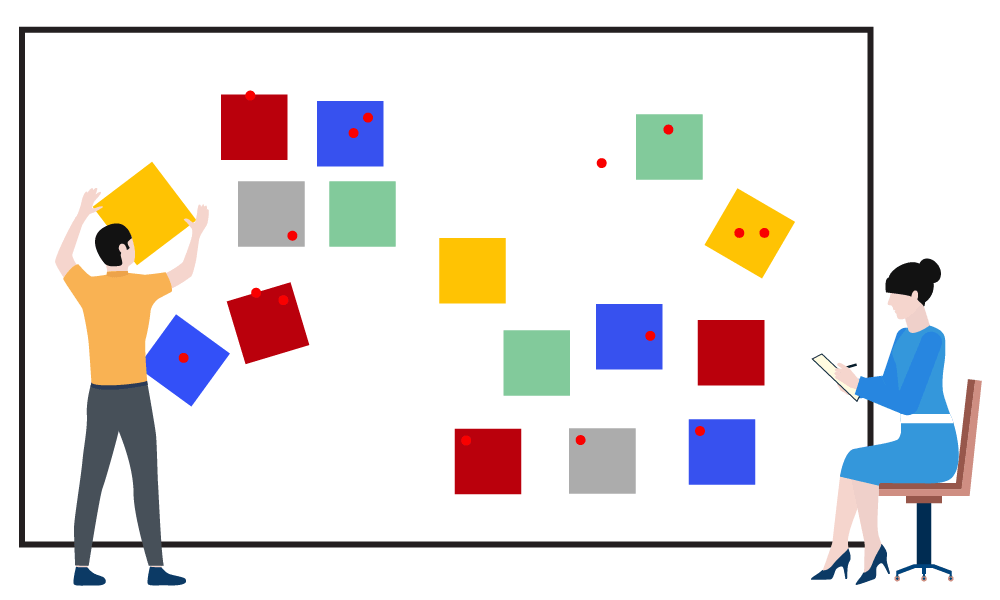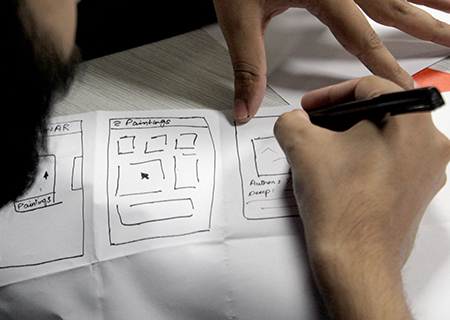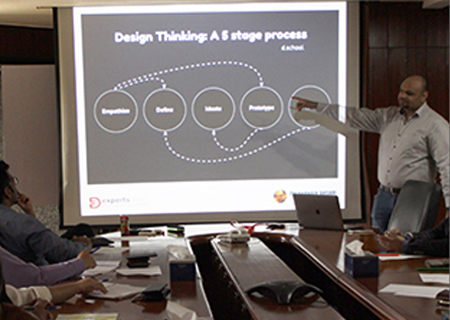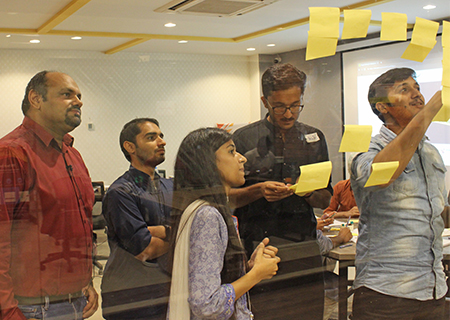design thinking
ux design workshops & prototypes
design thinking training program introductory video
during this 25-minutes mentorship session‚ you’ll learn:
- what is design thinking?
- why startups / organizations need design thinking process?
- how organizations / startups can empathize with customers?
- how to structure rapid experimentation?
- strategies for making your team more human-centered.
work smarter.
together we'll design‚ prototype and test your future
product‚ business strategy / big idea (alpha) in just 5 days.

what is design thinking?
design thinking is a process / of problem solving through understanding‚ design‚ prototype and testing ideas with by empathizing users. when applied to business‚ the success rate for innovation improves substantially.
your team will learn how to build creative confidence‚ user empathy and innovative thinking as a team.

faster to
market
attain focus‚ cut the technical issues and execute thoughts rapidly. pack a long time of months into few weeks to get products to showcase‚ quicker.

reduce cost &
risk
approve suppositions and product thoughts without taking a chance with the cost and time of structure and propelling digital items.

tangible
outcomes
stressed over others improving quicker than you? be aggressive by executing rapidly with substantial results. no busy time‚ genuine outcomes.




together our skills can build a great team
we’ve made it simple for you to exploit the important results of design thinking regardless of whether you have almost no experience with running one yourself.
we increase your group with key jobs that boost results and make the most out of your important time during the design thinking
with this‚ we ensure the following:
- creative confidence in team
- user empathy (emotional understanding of the needs)
- innovation thinking in the team
here's what a smooth design thinking looks like
01
step
empathise ‐ understand the experience‚ situation and feelings of the users who we’re working for
02
step
define ‐ process and synthesis the findings in order to form a user point of view that we will address
03
step
ideate ‐ focus on idea generation. translating problems into solutions. explore a wide variety and large quantity of ideas to go beyond the obvious solutions to a problem.
04
step
prototype ‐ build to think. a simple‚ cheap and fast way to shape ideas so one can experience and interact with them.
05
step
test ‐ ask for feedback on your prototypes. learn about the user‚ re‐frame views and refining prototype.
